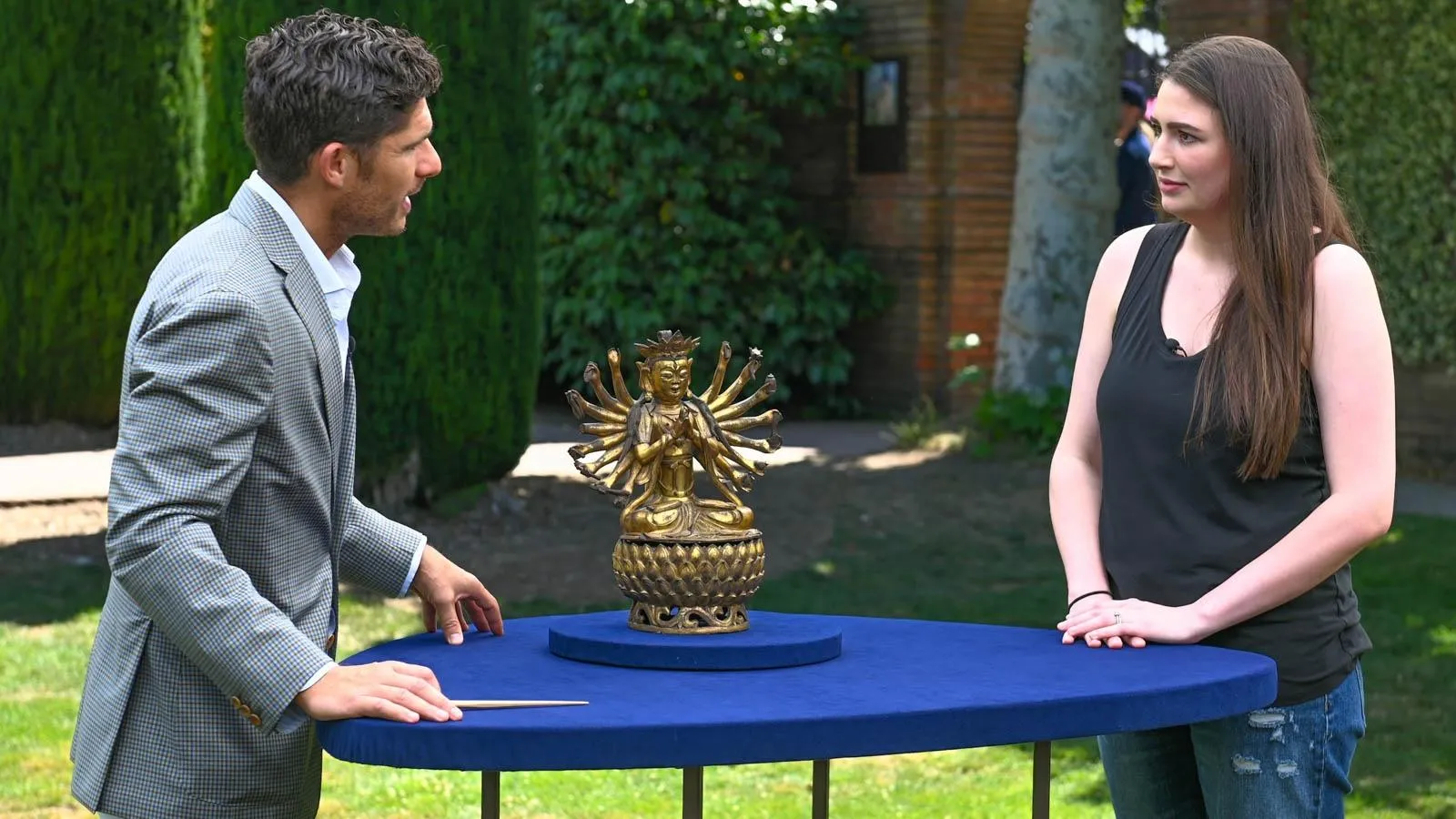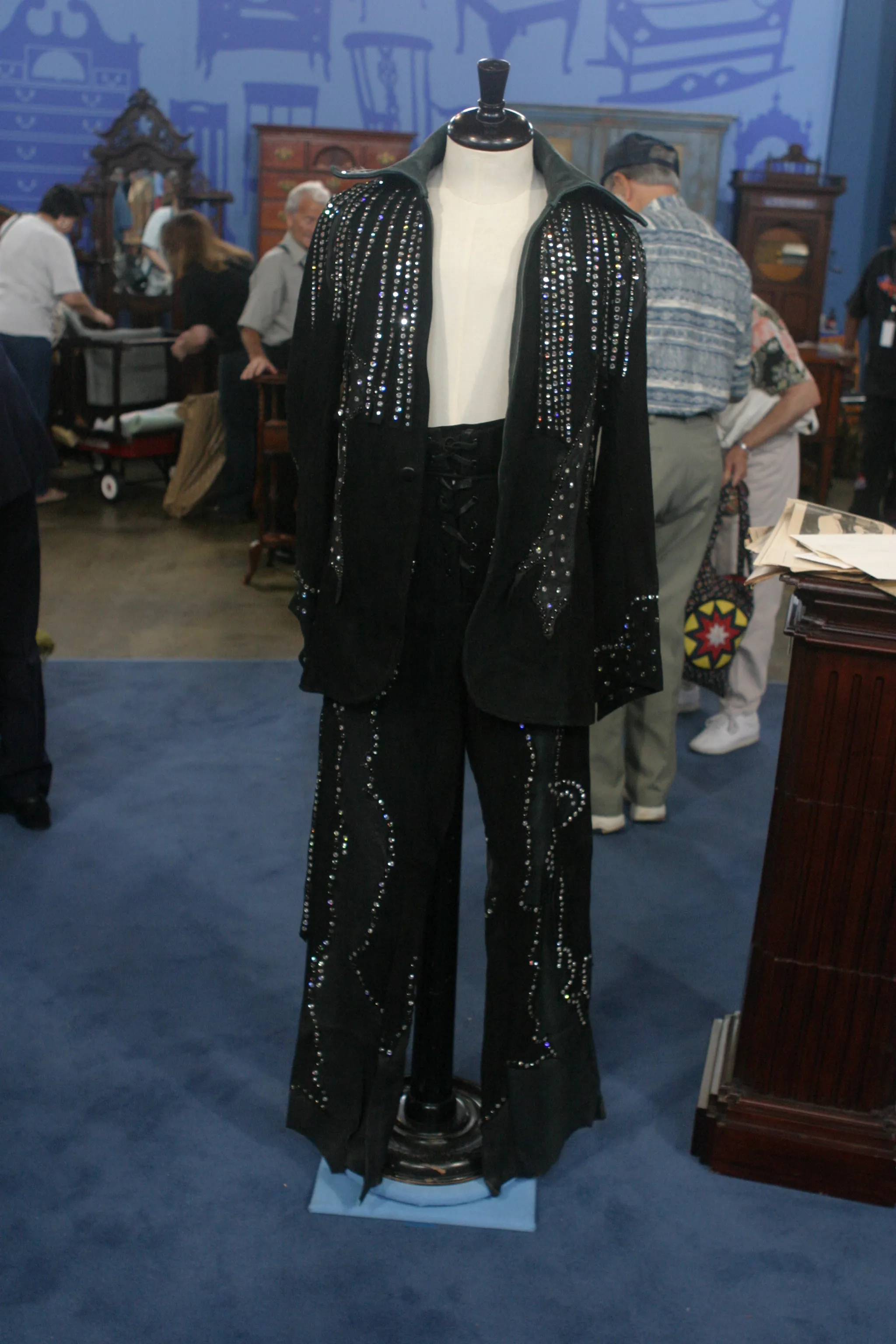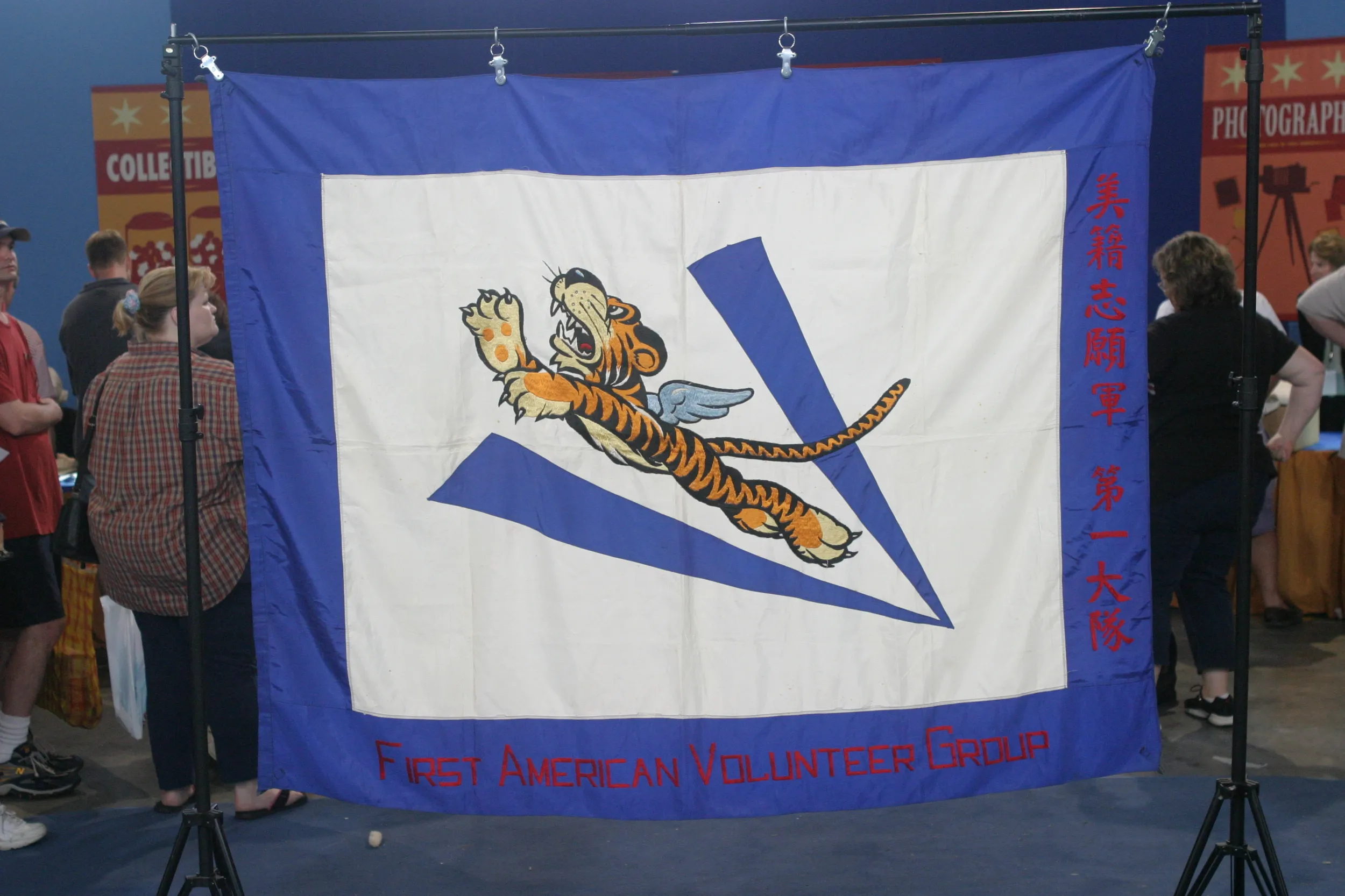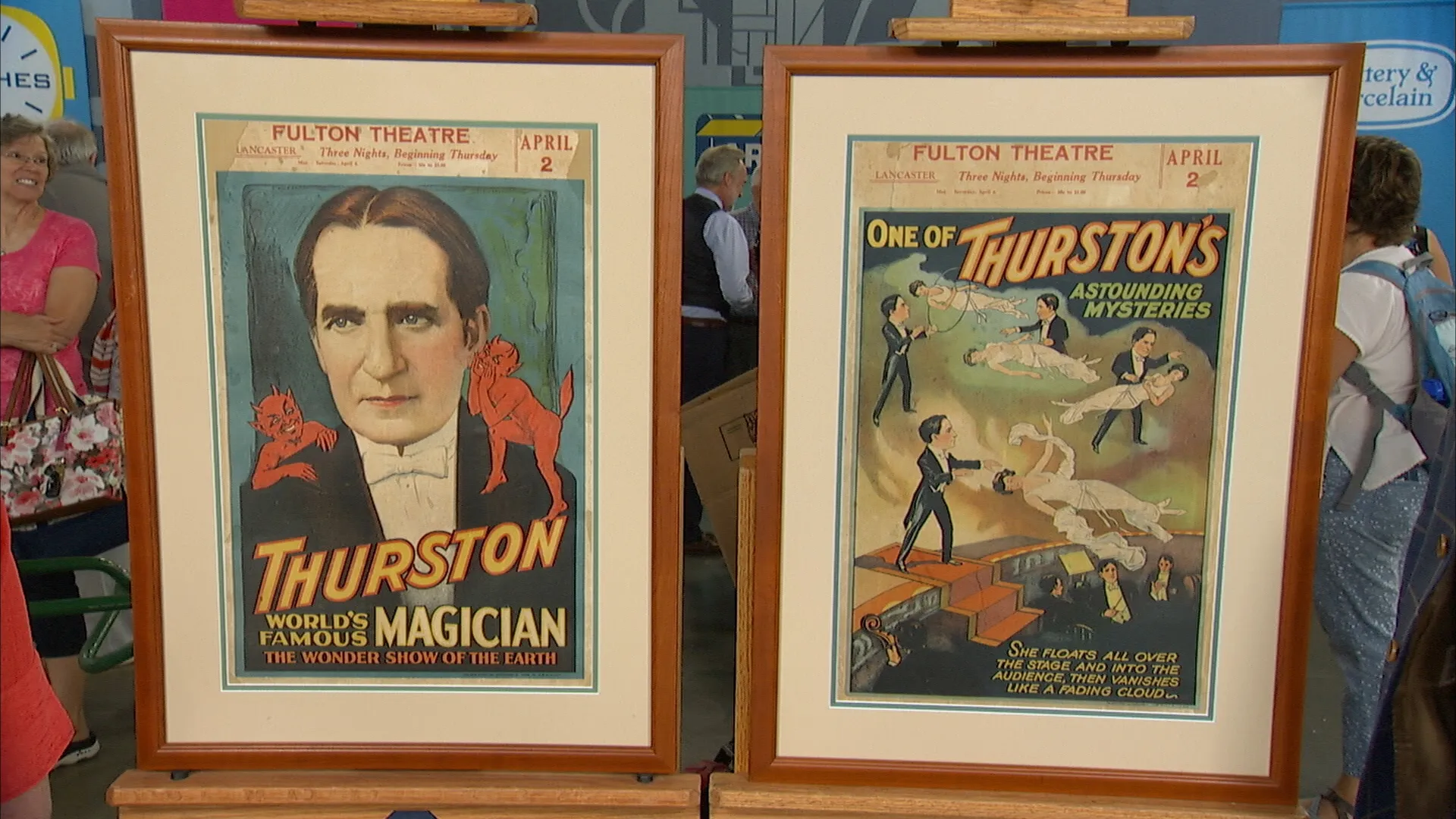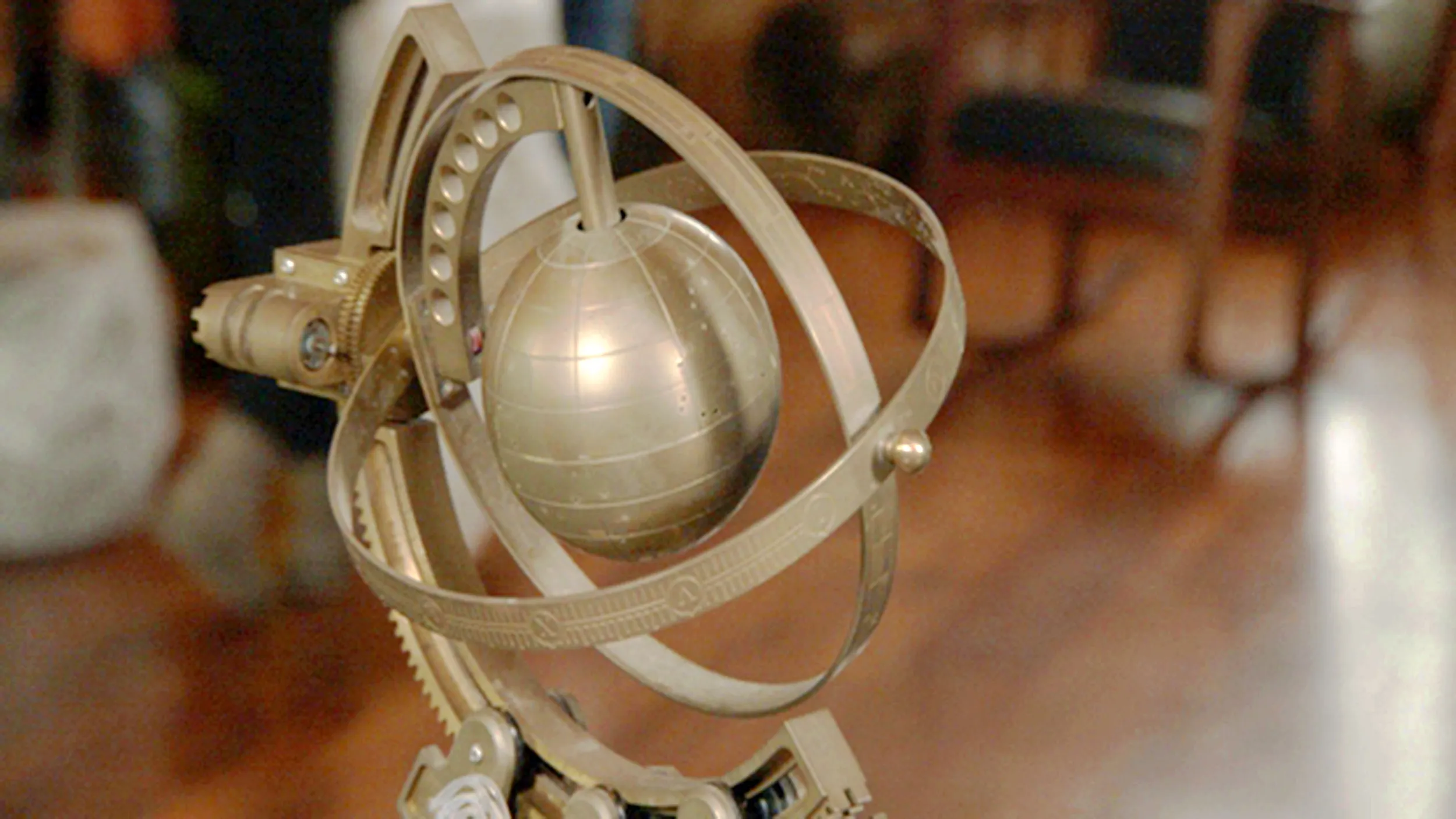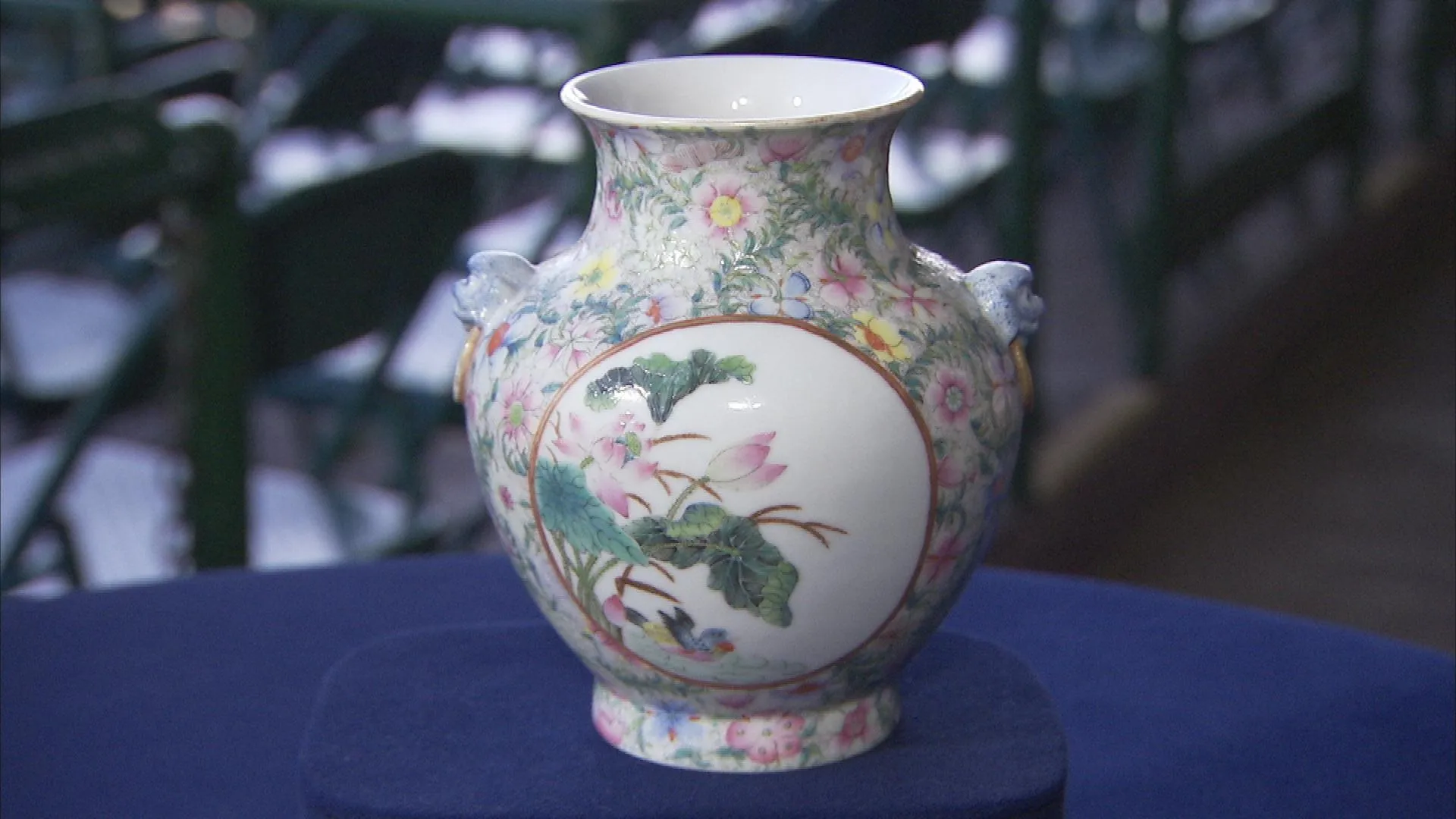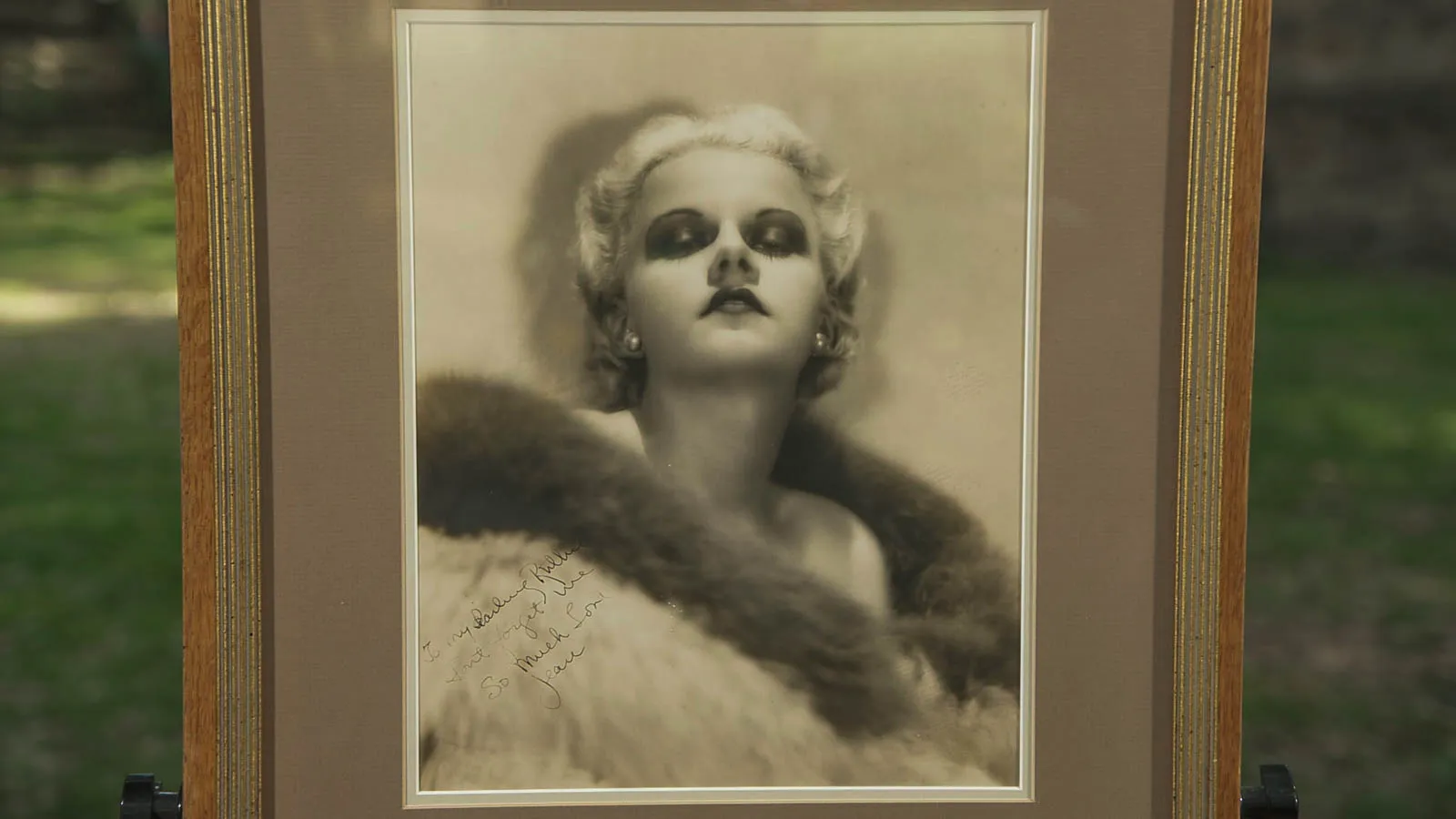GUEST: This is my grandma's. She did, uh, immigrate from Russia in 1920 to Iran. This was part of her dowry. And this is, eh, uh, from Turkmenistan, uh, Russia. And it's part of the bride's outfit that they put it on top of their hat. It's supposed to have a hat right here, and they just wear it like that.
APPRAISER: So it doesn't surprise me that your grandmother came with this from Russia and also into Iran. Both Iran, Persia at the time, and the Russian Empire, and later the Soviet Union, laid claim and, and colonized parts of Turkmenistan.
GUEST: Mm-hmm.
APPRAISER: So it would have been just the moment where that transition was happening.
GUEST: Uh-huh.
APPRAISER: When it was a Russian territory at that point.
GUEST: Oh, mm.
APPRAISER: This is what they call a chyrpy.
GUEST: Uh-huh.
APPRAISER: That is the, the Turkmen term. So this is from Turkmenistan, and specifically it would have been used in the Tekke tribe. And like you said, this would have been worn on the head and shoulders from the front here. But if I turn it just to show the back, you get a sense of a really important part of Turkmen garments, and that is this false sleeve. There are armholes that fall through, but this is actually just a panel, two panels, and they're usually connected by a smaller panel here, sometimes with fringe, sometimes not. And these would have fallen across the back of the head and the shoulders. These were worn ceremonially, so I'm not surprised that it was part of a dowry.
GUEST: Mm-hmm.
APPRAISER: That's quite, quite common. This is interesting as a dowry piece, because these dark-ground silk-embroidered chirpies would have been worn specifically by married women in times of ceremony.
GUEST: Mm-hmm.
APPRAISER: And it's in immaculate condition.
GUEST: Oh.
APPRAISER: Probably late 19th, maybe early 20th century, but I'm going to say about circa 1900.
GUEST: Uh-huh.
APPRAISER: This is all hand-embroidered on silk, in silk. And it's a technique, uh, the stitch is called kesdi, and there are different variations of the tulip all throughout.
GUEST: Uh-huh.
APPRAISER: And this was a symbol of fertility.
GUEST: Uh-huh.
APPRAISER: So this is why you see it attached to dowries, to marriage garments, so often.
GUEST: I see.
APPRAISER: And the lining on the full interior is a really beautiful pattern of block-printed cotton. A chit is what they would call these fabrics. C-H-I-T.
GUEST: Uh-huh.
APPRAISER: They do come up on the market.
GUEST: Uh-huh.
APPRAISER: But they often have condition issues.
GUEST: Uh-huh.
APPRAISER: And those tend to go in the range of anywhere from $500 to $1,500. But I think that, given the condition of this...
GUEST: Mm-hmm.
APPRAISER: ...in a retail setting, I think you're looking at about $2,500 to
$3,500, um, conservatively.
GUEST: Yes. All right, all right.
APPRAISER: It's a really wonderful piece.
GUEST: Thank you so much.
APPRAISER: So your grandmother never wore it. It was just...
GUEST: Yes, it was just...
APPRAISER: ...part of this, and...
GUEST: ...part of the dowry, and it was very special.


